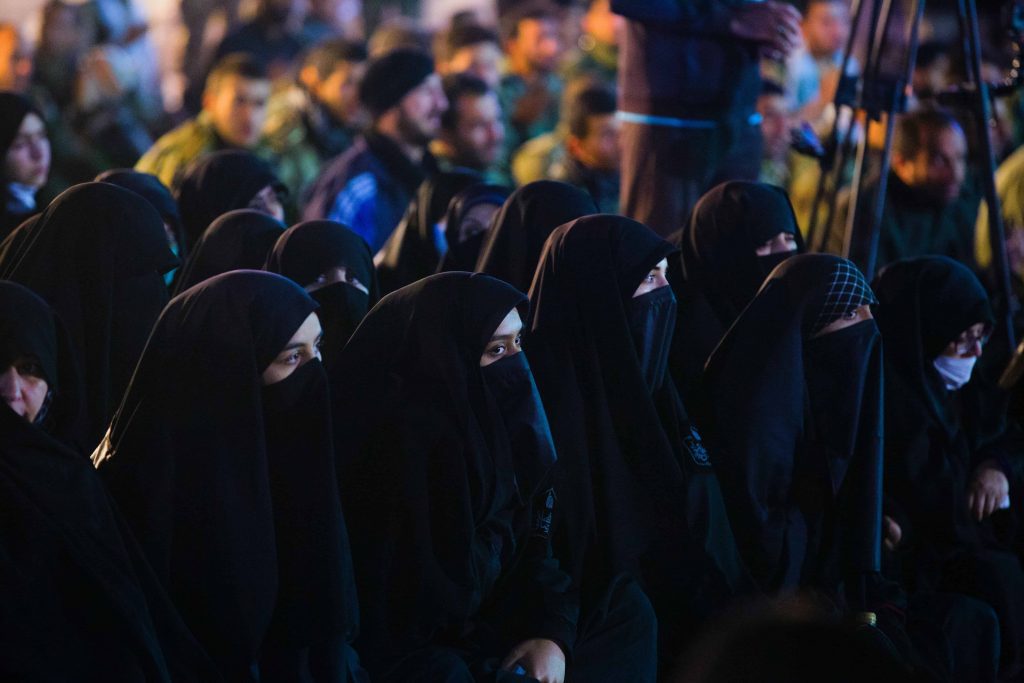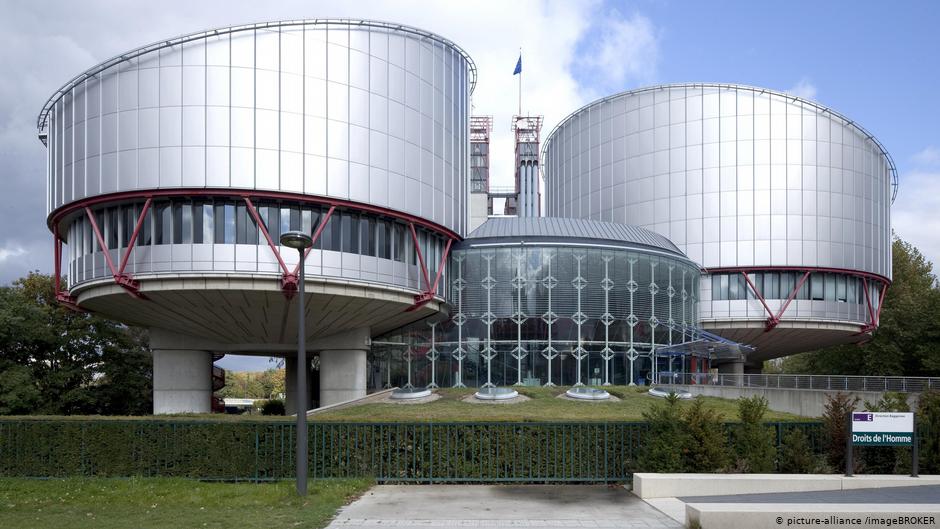
The rise of traditional, cultural, ethnic diversity in Europe has led to a widespread political and social debate about integration, migration, and freedom of religion. The phenomenon has been especially visible when there were debates and legal developments regarding the ban on wearing Islamic face veils (“burkha”) in public. The traditional Muslim religious attire is worn by Muslim women, particularly Wahabbi women. It covers the face of the woman, primarily for religious reasons, because it is regarded either as a religious obligation or as a conscious demonstration of the sanctity, although it may also be worn for cultural and political reasons as well.
It mainly came to light when France banned the burkha in 2010, passing legislation for the same. Many questions were asked: can a liberal state, for liberal reasons, ban the burkha? While some had viewed it as a form of discrimination against women, stating that it should be banned to achieve gender equality and ensure the dignity of women in the social sphere, others argued that the burkha is of concern to the public interest and thereby its prohibition is necessary to ensure and maintain public safety, security, health order, and morals. Thus, there have been conflicting perspectives.
The backdrop to the Burkha Ban in France
In France, debates about whether the girls and the women would wear Islamic headscarves in public places erupted in the late 20th century. France was the first European to ban the wearing of the burkha. The government of France in 2004 enacted law and imposed a ban on the wearing of religious symbols including hijab and the burkha. As a result of the controversies and conflicts, face-covering in public schools was forbidden in 2004. The ban was introduced. The ban was introduced on the principle of laicite, commonly referred to as secularism. It means that the public institutions must be secular. The headscarf or the face veil was considered inimical to the customs, regulations, and laws of France as it violated the separation of church and the state and also created differences among the citizens of a nation-state. The government stated that the law behind the banning of the burkha or the Islamic headscarf was mandatory to uphold the secularism of France.
The act exempted certain types of face wearings such as the face covers that were required for safety in certain jobs or if required for protection in the sports or if worn during attending festivals, celebrations, and occasions. The law prescribed punishment if anybody was found infringing the regulations of the Act. It stated that if any woman would be caught wearing the face-covering veil then she would be imposed with a fine of 150 euros or if any person forced the woman to wear religious attire then the person would be punishable with a fine of 30,000 euros and would also be liable for imprisonment. Thus, it can be assumed that these laws targeted Muslims as it is only the Muslim women who habitually cover their faces in public.
The European Convention on Human Rights judgment on the burkha ban
In its defense, France stated that the banning of the burkha would promote gender equality, protect the dignity of women, and emphasize the importance of living together. It stated that the face veil is an intolerable attack on the liberty and the dignity of women and also embodies the desire to exclude women from social life and is also a rejection of communalism. SAS v. France was a landmark case heard by the European Court of Human Rights, which found that the French ban on face-covering did not breach the requirements of the European Convention on Human Rights (ECHR). The Court stated the following in brief –
Rejection of the defense of gender equality.
The court rejected the defense of gender equality and stated that the state party cannot in its defense invoke gender equality to ban a practice that is defended by women in particular. In other words, it can be precisely understood that if the practice is voluntary, freely adopted, and defended by women then the state has no power to ban the face veil.
Rejection of the defense of human dignity
France argued that the wearing of the burkha in public spaces offends the dignity of the wearers. It also contended that even if the wearing of the face veil is a voluntary action, it cannot be permitted as it is demeaning themselves and therefore the state has paternalistic reasons to intervene and provide protection to the personal dignity of the citizens. The Court rejected the claim of the state and affirmed that the respect for human dignity cannot be a legal justification for a blanket ban on the wearing of the burkha and conferred that the court is under no jurisdiction to take a decision in the respect of human dignity and rejected the claim.
Acceptance of the defense of ‘Vivre ensemble’ or ‘living together’
The third defense was the requirement of living together and the maintenance of peace and security in the nation-state. There must be the protection of the public from any kind of harm and to maintain public order among the individuals. It thereby means that there must be equal rights for the citizens and are to be protected equally from any kind of harm. The court approved the defendants’ demand for a burkha ban because it would maintain peace and ensure public order, which is the state’s lawful aim.
However, the court did not approve for the requirement of public order but did approve and considered the requirement for the protection of citizens’ rights and freedoms and stated that the barrier raised by the state as to the wearing of the face veil was a breach of the right of others to live in a space of socialization that would contribute to the right of others to live in a space of socialization.
Relevant cases related to Article 9 of the ECHR

Over time, this decision has been controversial, and there have been arguments that the ban violates Article 9 of the European Convention of Human Rights. Case law relating to Article 9 of the European Convention On Human Rights can be summarised as follows:
- In Kokkinakis v Greece, 1993, a couple was having religious discussions with their neighbors was prosecuted for violating the Greek laws and regulatory orders. The European Court of Human Rights ruled that the Greek law violated Article 9 of the European Convention on Human Rights because it was not proportionate to the legality of protecting others’ rights and freedoms, and it affirmed that the right to manifest religion can be exercised in both the private and public spheres.
- In Ahmet Arsalan v Turkey, 2010, the members of a particular religious group gathered at a mosque for worship and as per their religious beliefs, they attended the festival by wearing their religious attire i.e, burqa. Consequently, the government of Turkey convicted them for breaching the laws of the state and prohibited them from wearing it in public places. The European Court of Human Rights held the state responsible for interfering with Article 9 of the ECHR and reasoned that the manifestation of religious beliefs in public will not have an influential control on the others and will not violate the neutrality of the state.
- In Sahin v. Turkey, 2010, a Turkish ban on the Islamic headscarf in the institutions of higher education was challenged. Sahin, a student at one of the educational institutions, donned a headscarf as part of her religious obligation, and this conduct was deemed a violation of Turkish legislation, and she was thus barred from taking the exam. She subsequently filed a lawsuit, claiming that it violated her religious freedom under Article 9 of the Constitution. of the European Court of Human Rights. The European Court of Human Rights ruled that the Turkish prohibition did not infringe on her religious rights and freedom and that the restriction on wearing a burqa was justifiable.
- In the case of Dahlab v. Switzerland, 2001 the teachers of a Swiss primary school were prohibited from wearing the headscarf while teaching on behalf of the state, stating that it violated the rules and regulations of the laws of the Switzerland Public Education Act. The European Court of Human Rights ruled that the restriction on wearing face coverings did not violate Article 9 of the European Convention on Human Rights and voiced concern about the Islamic headscarf’s influence on the concept of equality.
Relooking at the decision of the European Court of Human Rights
Several arguments have been made that state that the ECHR’s decision in the French case was erroneous. Some of these are:
- The burqa ban in France should be distinguished from the other cases wherein the ECHR has held that the limitation of Article 9 was necessary for a democratic society. The nation-states where the wearing of burqa has been banned because of the fear of the interference of the religious customs within the democratic society. The situation in France is therefore not concerned with the notion to maintain democracy and the ban’s social context renders a practical effect as a discriminatory one.
- The ban on the wearing burqa creates an atmosphere of inequality by infringing the basic rights and privileges of the citizens that have been guaranteed under the various national and international conventions.
- The full-face veil is considered neither a religious obligation nor a religious symbol under Islam. Like the people in the Christian communities wear a Christian cross which is not a religious obligation but is considered as a religious manifestation. In the same way, the full-face veil is associated with Islam and is regarded as a part of their family regulations and as a religious manifestation. There has been discrimination between both these types of religious attire without justification and is a representation of Islamophobia.
Violation of Human Rights

The prohibition on wearing an Islamic headscarf or a face veil is a violation of France’s human rights obligations under Article 9 of the European Convention. The European Convention on Human Rights is a very significant human rights convention, although it does not bind member states to its human rights provisions. This lack of enforcement power has sometimes resulted in violations of human rights provisions in the European Convention, whereas the United Nations Commission on Human Rights binds nation-states to follow the basic provisions of the convention and gives the United Nations Organization the authority to intervene if there is any infringement of the basic provisions of the United Nations Commission on Human Rights.
In 2010 when France passed an Act to ban the wearing of the burqa or the face veil in public places as a threat to secularism, it disproportionately acted as a target to the minority Muslim women. The United Nations Commission on Human Rights committee intervened in the matter in 2018 and ruled that the ban on the wearing of the burqa in France advertently interfered with the religious rights of the women from the Muslim community. The committee affirmed and disagreed with the claims of France as it is a necessity to ban the burqa from the point of security and for the attainment of living together in the society. The committee stated that France is a signatory to the International Covenant on Civil and Political Rights and thus is bound to the international legal obligation of complying in good faith. It stated that the decision of the ECHR in banning the wearing of a face veil harmed and infringed the religious rights of the Muslim women to manifest their religious beliefs and which could even lead to the marginalization, discrimination, and unemployment making them confined to their homes.
In 2018, a suit was filed by two Muslim women stating that the ban acted as a violation of the manifestation of their religious beliefs. The matter was taken up by the Human Rights Committee and in its decision held that:
- The ban violated Article 18 of the International Covenant on Civil and Political Rights i.e, the violation of the manifestation of religious beliefs.
- It also violated Article 18 and Article 26 of the Convention and stated that France in its decision on banning the burqa did not specify its reasoning as to how it interfered with the rights of the others.
- It was also determined that wearing the burqa did not violate gender equality rules and did not promote any form of inequality among individuals.
- The committee also urged the state government and the law-making authorities to review the law on the ban of the burqa.
- The committee ordered the state authorities to compensate the women affected by the ban.
- It also stated unequivocally that its ruling does not represent a challenge to France’s secular Constitution and is not an endorsement of a custom.
Conclusion
The legislation approved in France prohibiting the wearing of a face veil was not commensurate to the grounds given in support of the law or those that surfaced in public debate. The prohibition expressly barred Muslim women from wearing the burqa, despite the fact that wearing a face veil is a manifestation of their religious beliefs. The restriction not only contradicted the requirements of the European Court of Human Rights, but it also infringed individuals’ human rights. The prohibition of Islamic veils such as the burqa and hijab violates the requirements of the International Covenant on Civil and Political Rights and other international conventions, and so cannot be legally justified as a necessary response to terrorism.
The burqa ban does not give the right to the individuals to make any naive comments about the incapability of women’s rights and Islam. The government of the nation-states and the Islamic leaders should respect the views of Muslim women. Mandates prohibiting women from wearing face veils act as inconsistent with the modern interpretations of Islam and the International Human Rights law respectively. Thus, it is the responsibility of individuals and the government to ensure the human rights of Muslim women by equally respecting their autonomy, equality, and dignity, as well as to prohibit racism by compelling them to dress in accordance with others, thereby prohibiting the exercise of dictatorial power.